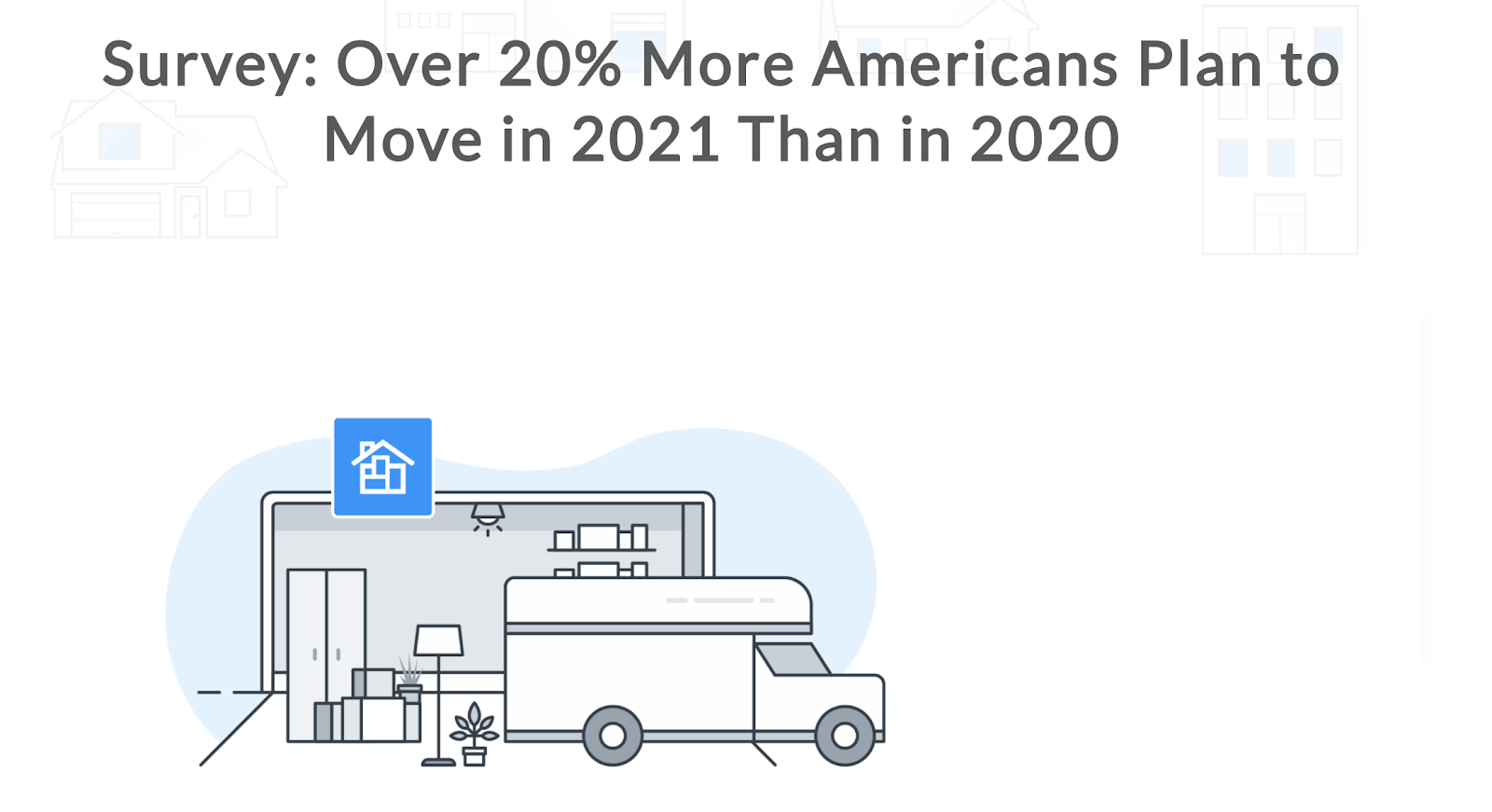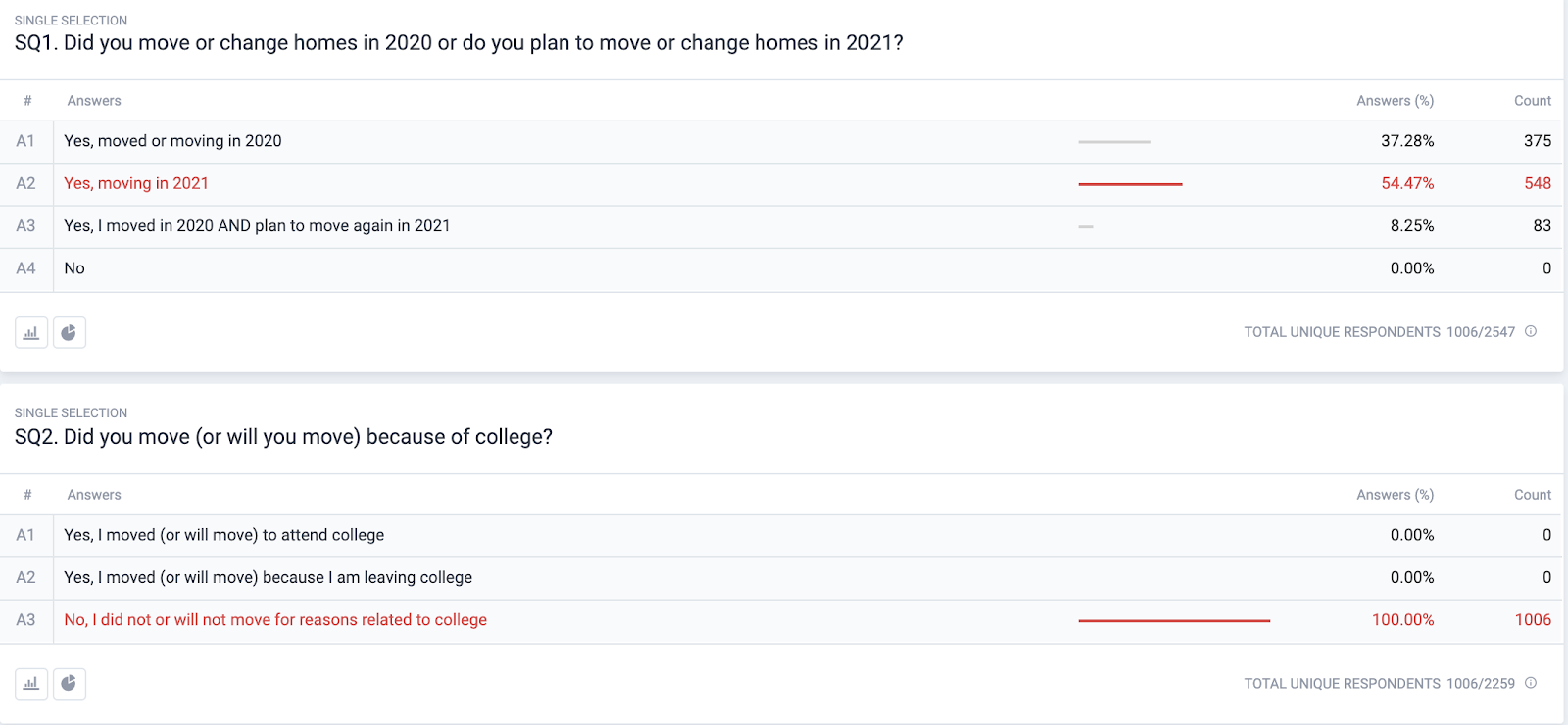20% More Americans Are Moving in 2021 Than in 2020 — How Pollfish Insights Empowered Neighbor’s American Migration Report

This article was contributed by Christina Marfice of Neighbor.com.
The COVID-19 pandemic has changed everything about our lives — and that includes when, how, and why Americans are moving to new homes.
That’s what Neighbor, a peer-to-peer self-storage platform, learned when it used Pollfish to gather data for its 2020-2021 American Migration Report, which surveyed consumers about how they moved in 2020 — and how they plan to move in 2021.
Neighbor set out to see how many people moved this year, how many plan to move next year, and how the pandemic is factoring into people’s choices to change homes. Here are some of the most interesting discoveries:
- 21% more people plan to move in 2021 than moved in 2020.
- We thought that was because people wanted to move to safer places during the COVID-19 pandemic; we actually found that more people were moving for reasons like lowering their living costs and taking advantage of newfound job flexibility.
- Homeownership is on the rise, and 40% of movers are relocated from large cities to smaller communities where they can own bigger homes or larger pieces of land.
- More than 70% of movers say they’re excited to get to know their new neighbors — once it’s safe to do so, of course.
This is how Neighbor created that survey, and why Pollfish was the perfect tool to collect the data needed for the report.
How Neighbor Created its Survey Research: Qualifying Responses
For Neighbor, the 2020-2021 American Migration Report started with a simple question: How are people moving in the midst of the COVID-19 pandemic?
“The housing market being what it is, it seemed as though despite the pandemic (or because of it) many people were on the move,” said Katy Flatt, a promotion and outreach coordinator who worked on the report. “How many people moved in 2020? How many people plan to move in 2021? How many people moved in 2020 and plan to move again in 2021? How many people are leaving rented apartments and buying homes? Or vice versa? Those are just some of the things we wanted to find out for our readers.”
To ensure they were collecting the correct, most relevant data, Flatt started with a series of qualifying questions, something she said Pollfish makes simple and straightforward when building a survey.
“We wanted to first make sure those that were taking the survey had either moved or will move, but it was also important to disqualify those that have moved or are moving for college or post-secondary education — the reason being that these movers have less control over the factors and motivators we were trying to put a pulse on – where they’re moving, why, what type of dwelling they’re moving into, the utilitarian factors around that decision, etc.”

Those qualifying questions ensured that Neighbor collected a robust dataset from consumers who had relevant information to provide about their moves in 2020 and 2021. Then, it was just a matter of asking the right questions to learn more.
How to Write a Report: Filtering Response Data
The next step was to hand off the data from the completed survey to a writer. Neighbor’s 2020-2021 American Migration Report was written by Tina Eaton, who used Pollfish filtering tools to interpret the data and write a strong narrative-driven report.
“What impressed me the most was how easy it was to use Pollfish to filter survey responses by tons of different details,” Eaton said. “This feature was super helpful for finding interesting insights that would have been nearly impossible to see if I was just looking at a bunch of data on a spreadsheet. I was able to see not just who was moving but I could dive into the details of where certain groups were moving to, where they were moving from, why they were moving, and more.”
Having so many filtering options with the data collected on Pollfish gave Eaton the ability to highlight different segments of the survey in the report. She was also able to see how certain answers affected others, which meant she could look for differences in the reasons people were moving in 2020 versus 2021. That led to one interesting finding: That many people moving in 2021 were doing so for reasons related (either directly or indirectly) to the pandemic. Some of them were making moves because of increased flexibility from remote working, and many were moving to lower their living costs amid so much uncertainty in the economy and the job market.
Being able to filter answers was only one part of how Pollfish made this easy for a writer — even one without extensive training or experience in data analysis — to identify important insights from a consumer survey.
“It wasn’t just the filters that made Pollfish so effective for this project,” Eaton said. “The dashboard is also organized and uncomplicated to use. I’m sure anyone who’s worked with data collection has had plenty of experiences trying to bring all your information together from a bunch of different sheets and sources that don’t play well with each other. It can be really hard to make data work for you. Pollfish made it a lot easier to understand and work with my survey results.”
 Implementing the Right Market Research Tools
Implementing the Right Market Research Tools
If there’s anything the Neighbor team learned from creating this report, it’s that having the right tools for whatever job you need to do can make all the difference. In this case, having Pollfish to survey consumers, sort and organize the data, and identify insights that might interest readers was what made the report as thorough and informative as it is.
“Pollfish makes it ridiculously easy for us to gain insights on consumer behavior and feelings,” Tyler Hakes, a part of Neighbor’s content marketing team, said. “Their interface is simple, the process is simple, and the results are quick. That’s important because in the world of content, every day is something new and we have to move quickly to keep up.”
Hakes plans to use Pollfish for future projects, especially as he creates more content about how the ongoing pandemic is affecting people’s lives.
“At this particular moment, everyone’s lives are changing almost every day,” he said. “With the COVID-19 pandemic, changing rules, and shifting feelings, Pollfish was perfect because we got to capture a snapshot of everyone’s feelings that we could immediately turn into a story and share with the world.”
Do you want to distribute your survey? Pollfish offers you access to millions of targeted consumers to get survey responses from $1 per complete. Launch your survey today.
Global GSK Shingles Survey Insights
Original Insights,The Pollfish Blog
February 24, 2024
Shingles misconceptions: new global survey commissioned and funded by GSK highlights widespread…
B2B Sales Emails: Are they Effective or a Nuisance?
Original Insights,The Pollfish Blog
September 6, 2022
Are B2B sales emails a thorn in your side? Do they drive you crazy? Virtually all white-collar…

 Implementing the Right Market Research Tools
Implementing the Right Market Research Tools